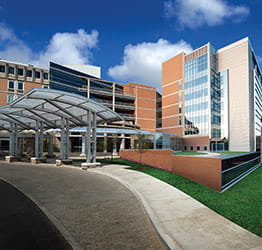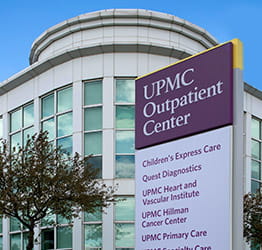On this page
What Is a TIA?
A transient ischemic attack (TIA) — also known as a “mini-stroke” — occurs when blood flow to your brain is temporarily blocked. TIA causes stroke symptoms that last for a short time, then go away. Unlike a stroke, a TIA doesn’t cause brain tissue to die because the blockage goes away quickly on its own.
Having a TIA means there is a problem with blood flow to your brain and is a warning that a more serious stroke may occur. According to the American Stroke Association, nearly 1 in 5 people who have a suspected TIA will have a stroke within 90 days. To reduce your risk of a future stroke, you must get immediate treatment for a TIA.
What causes TIA?
TIAs can be caused by:
- A blood clot that blocks an artery in your brain, including blood clots that develop in your brain or blood clots that develop elsewhere in your body and travel to your brain.
- Injury to the blood vessels in your brain.
- Narrowing of a blood vessel that supplies blood to your brain, such as your carotid arteries.
What are TIA risk factors and complications?
TIA risk factors
TIAs are more common in males over the age of 55, but they can happen to anyone at any age. You may be at higher risk of a TIA if you have risk factors including:
Complications of TIA
Although TIAs do not cause permanent damage to your brain because they resolve quickly on their own, they are a warning sign that another stroke could happen in the near future. If a TIA is left untreated, it puts you at higher risk of experiencing a stroke that could cause permanent disability or death.
How can I prevent a TIA?
You may not be able to control some of your TIA risk factors, such as aging. However, preventing heart disease and chronic conditions can reduce the risk that you will have a TIA. You may be able to reduce your risk by:
- Eating a diet that is rich in fruits, vegetables, and whole grains.
- Exercising and maintaining a healthy weight.
- Maintaining normal blood pressure and cholesterol levels.
- Avoiding smoking.
- Limiting alcoholic beverages.
How common is TIA?
The American Stroke Association estimates that approximately 240,000 people in the U.S. experience a TIA every year.
Back to top.
What Are the Signs and Symptoms of TIA?
TIA symptoms are the same as stroke symptoms. They usually start suddenly and last a short time. Symptoms may last a few minutes or hours before going away on their own. Sometimes, symptoms can last up to 24 hours before going away. TIA symptoms can also come back later.
Symptoms of a TIA may include:
- Changes to hearing, vision, touch, or taste.
- Confusion or memory loss.
- Difficulty walking or moving.
- Dizziness.
- Loss of bladder or bowel control.
- Loss of consciousness or sleepiness.
- Nausea or vomiting.
- Numbness or weakness in your face or limbs that may affect only one side of your body.
- Problems with balance or coordination.
- Seizure.
- Severe headache.
- Trouble speaking or understanding speech.
Women who have a TIA are more likely to experience generalized symptoms, such as tiredness, weakness, confusion, and trouble remembering or thinking. Men are more likely to experience changes to their senses, including hearing, vision, touch, or taste.
When should I see a doctor about my TIA symptoms?
A TIA could be a warning sign of a more severe, life-threatening stroke and requires emergency treatment. If you have TIA symptoms, dial 911 right away — don’t wait, even if your symptoms go away. Getting fast treatment can reduce your stroke risk.
Back to top.
How Do You Diagnose a TIA?
To diagnose a TIA, your doctor will perform a physical exam and order imaging or other tests.
What to expect during your visit
When you arrive at the hospital, your doctor will:
- Perform a physical exam.
- Order imaging or other tests.
- Review your health history and medications.
Tests to diagnose a TIA
Your doctor may request imaging tests to examine how blood flows through the blood vessels in your brain or other tests to look for the cause of your TIA. Diagnostic tests for TIA include:
- CT or MR angiogram — Also known as arteriography or an arteriogram, this test uses x-rays or magnets and a special contrast dye to look for problems with the blood vessels in your brain.
- CT scan — A test that creates images of your brain and is used to diagnose stroke, brain aneurysm, or another type of brain injury.
- Echocardiogram — A noninvasive heart ultrasound procedure used to assess the function and structures of your heart. This test can help your doctor find out if you had a blood clot travel from your heart to your brain.
- Electrocardiogram — A noninvasive test that looks for abnormal heart rhythms.
- MRI — Uses a combination of large magnets, radio frequencies, and a computer to produce detailed images of your brain.
- Ultrasound — A noninvasive test that uses ultrasound waves to measure blood flow through your arteries and veins. Your doctor may use this test to see if the carotid arteries in your neck are blocked or narrowed.
TIA prognosis
Although a TIA will not cause permanent damage, it means there is a problem with blood flow to your brain. TIAs are a warning that a more serious stroke may occur. According to the American Stroke Association, nearly 1 in 5 people who have a suspected TIA will have a stroke within 90 days.
To prevent a future stroke, you must get immediate treatment for a TIA. Your prognosis will depend on how quickly you receive treatment for your TIA and manage your other stroke risk factors.
Back to top.
How Do You Treat a TIA?
The goal of TIA treatment is to diagnose the cause of your TIA and prevent a future stroke by managing your stroke risk factors. Treatment may include:
Lifestyle changes
Your doctor may recommend lifestyle changes to reduce your risk of stroke. Lifestyle changes include:
- Controlling blood sugar if you have diabetes.
- Decreasing LDL (bad) cholesterol levels in your blood and increasing HDL (good) cholesterol levels.
- Eating a heart-healthy diet.
- Exercising.
- Limiting alcohol intake.
- Losing weight.
- Lowering blood pressure.
- Quitting smoking.
Medicine to treat TIAs
Medication can help you manage other health conditions contributing to your TIA. Medications your doctor may prescribe include:
- Antiplatelet medications, such as aspirin and clopidogrel.
- Blood pressure medications, such as diuretics and beta blockers.
- Blood-thinners (anticoagulants), such as warfarin.
- Statins to control cholesterol levels.
Carotid endarterectomy for carotid artery disease
Carotid endarterectomy is the standard treatment for carotid artery disease. Your doctor may recommend this treatment if your TIA was caused by blocked or narrowed carotid arteries.
This surgical procedure allows your surgeon to remove the inner lining of your carotid artery that contains the plaque through a small incision in your neck.
If you need a carotid endarterectomy, UPMC vascular surgeons have performed thousands of these procedures. We generally discharge most patients the day after the procedure, with little risk for long-term complications.
Angioplasty and stenting
Angioplasty and stenting are minimally invasive procedures that your surgeon may recommend if complete blockage or narrowing of your artery occurs. It allows your surgeon to use x-ray imaging to guide a balloon-tipped catheter to the blockage.
During this procedure, your surgeon will:
- Insert a small, thin tube called a catheter through a small incision in your groin. The catheter has a balloon at the tip.
- Use x-ray imaging to guide the catheter to the site of the blockage.
- Inflate the balloon at the tip of the catheter to flatten the plaque and open the artery.
- Place a small metal tube called a stent to help open your artery.
Abnormal heart rhythm (arrhythmia) treatment
If you have atrial fibrillation (A-Fib) or another type of abnormal heart rhythm, your doctor may prescribe medication or recommend a procedure to:
- Prevent blood clots from traveling from your heart to your brain.
- Reduce your risk of developing blood clots.
- Restore your normal heart rhythm.
Why choose UPMC for TIA care?
When you choose UPMC for TIA care, you will receive:
- Access to world-class neurosurgery expertise —Our world-renowned experts treat the full spectrum of neurosurgical conditions using the latest diagnostic and treatment techniques.
- A full range of treatment options — We offer nonsurgical care, as well as minimally invasive and traditional open surgical procedures, allowing us to effectively treat all types of disorders while reducing your risk of complications.
- Multidisciplinary care — We partner with neurologists, rehabilitation specialists, and other medical experts to provide complete care that optimizes your recovery and quality of life.
Back to top.
By UPMC Editorial Staff. Last reviewed on 2025-10-23.
















